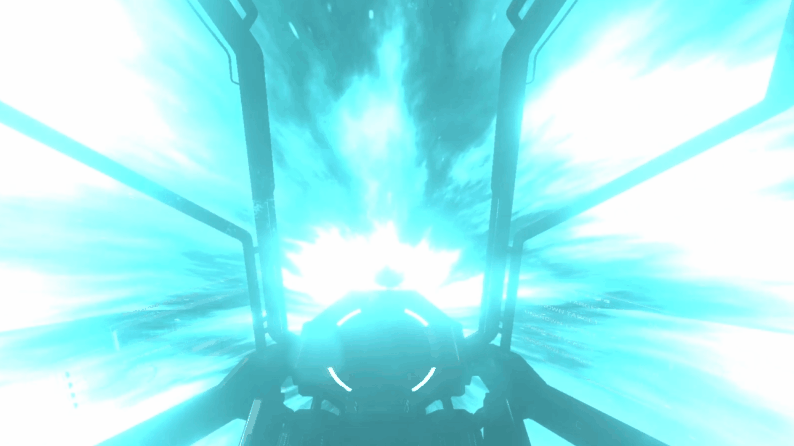Here’s another quick update on the progress of Hellion. This time we want to share with you the mechanics behind module salvaging and different types of propulsion.
Let’s kick off with salvaging station modules. So you’ve been exploring the area around your starting outpost, looking for supplies, spare parts and various equipment. So far you’ve managed to survive with what you could scrape up from derelict ships and stations but this time you’ve managed to find a station module. It sure would make an excellent addition to your life support section. Time to get to work.
First you need to know if it’s in good condition, so make sure to inspect it carefully for any signs of damage. If the module is in really bad shape, looking for a new one might be more efficient than repairing it. When you’ve made up your mind, it’s time to take it home with you. This is where your ship comes into play. Every utility shuttle comes equipped with a rear mounted grappling system that allows secure docking with any standard station module. In order to do so you need to align your ship with the module and approach close enough to initiate grappling sequence. Once the module is securely locked-in it is safe to transport.
Now let’s talk about different propulsion types. There are three ways to travel in Hellion. RCS (Reaction Control System) is used for maneuvering your ship (or character equipped with jetpack) over very close distances like docking with a station or approaching an asteroid.
Main engines are designed to provide enough thrust to quickly change your orbit around a nearby planet or a moon. They can also be used to cross larger distances, like moving from the low orbit of a planet to the nearby moon but keep in mind that it will take a very long time.
So now you are probably wondering, if main engines can take hours and days to get you to the nearby moon and using them to reach the next closest planet would take months, how do you ever get anywhere without growing old and dying in the process?
The answer is warp drive. Every ship in Hellion comes equipped with one. It uses a massive amount of energy inside special fuel cells to locally warp space and time, creating a bubble that compresses space in front of you while expanding it behind you.
Warp is used to cross interplanetary distances quickly, but can also be used for local travel, from planet to one of its moons for example. Since it constantly accelerates it is most effective over very long distances (think astronomical units, or 150 million km). Your ship will initially move at sub-light speeds, but given enough time the acceleration will eventually breach the light barrier.
However even warp drive has limitations. Maximum distance you can cross in a single jump is limited by the amount of power available in your fuel cells and every ship can only activate a limited number of them at once. Fuel cells themselves are another issue as they are really hard to come by and should not be wasted needlessly, rest you lose warp capability at a crucial moment.
Until next time,
Zero Gravity team








